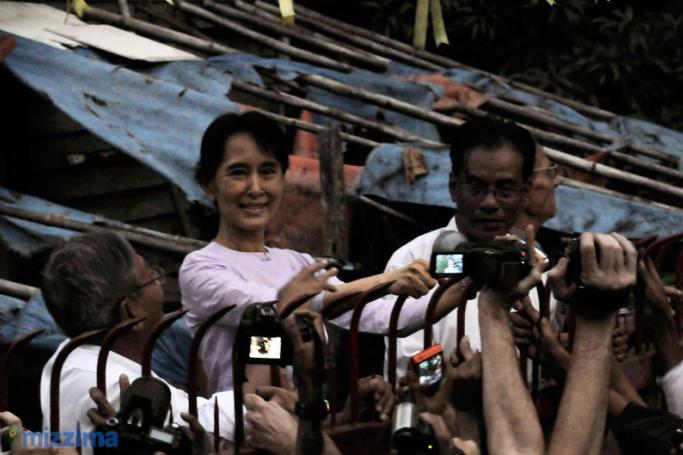Myanmar goes to the polls on November 8 for what voters hope will be the country's fairest election in decades.
Here is a timeline of a nation that threw off the shackles of colonialism only to plunge into a dictatorship whose shadow it is only now beginning to emerge from.
1885
Centuries of rule by a Buddhist monarchy ends with the defeat and exile of Burma's last king by the British. A lengthy period of Western colonialism begins and Burma (as it was then known) becomes a province of British India.
1941-1945
Japan occupies Burma during World War II. Nationalist hero Aung San fights with the Japanese, but turns against them in the closing stages of the war, joining the Allied counter-offensive in the hope of achieving independence.
His daughter Aung San Suu Kyi, who would go on to lead the pro-democracy movement, is born in 1945.
1948
Burma attains full independence from the British on January 4, a dream Aung San never lived to see following his assassination months earlier.
1962
After years of factional infighting among Burma's political leaders -- including a general election in 1960 -- General Ne Win seizes power in a coup, turning the country from a multi-party federal union into an authoritarian one-party state ordered to follow his "Burmese Path to Socialism".
1988
Disastrous economic mismanagement and political repression see Burma erupt in protest. The military responds brutally, killing an estimated 3,000 people. Suu Kyi emerges as a key opposition leader.
1989
Junta changes the country's name to Myanmar.
1990
Suu Kyi's National League for Democracy (NLD) wins a landslide victory in elections but the result is ignored by the military who launch a new crackdown. Suu Kyi is placed under house arrest, where she will spend most of the next 20 years. Many other opposition leaders are jailed or flee.
1991
Suu Kyi wins the Nobel Peace Prize while under house arrest.
1992
Than Shwe becomes the new junta chief.
2005
A new isolated city Naypyidaw ("Abode of Kings") is revealed as the country's capital after being built in secret by the paranoid junta.
2007
Major protests dubbed the "Saffron revolution" break out over the summer, partially led by Buddhist monks. Junta eventually responds once more with violence, killing scores of protesters.
2008
Vast swathes of the Irrawaddy Delta are devastated by Cyclone Nargis, which leaves some 138,000 people dead. The junta's lacklustre response and resistance to international offers of help draws widespread criticism.
2010
Junta holds elections in early November and the military-backed Union Solidarity and Development Party (USDP) party claims victory. NLD and many other parties refuse to take part. Observers do not consider the poll free or fair.
Less than a week after the election, Suu Kyi is released after spending 15 of the last 20 years under house arrest.
2011
In a surprise move, the junta relinquishes power to a quasi-civilian government under former general Thein Sein who pursues reforms. Many basic rights are restored, including the lifting of restrictions on assembly and expression, while hundreds of political prisoners are freed.
A ceasefire collapses in northern Kachin state and fighting resumes forcing tens of thousands to flee from their homes.
2012
NLD wins 43 out of 45 seats in April by-elections. Suu Kyi becomes an MP. The United States and European Union begin lifting sanctions and Western businesses start flocking to the country. Sectarian violence flares in western Rakhine state, mainly aimed at the Rohingya Muslim minority.
In November, Barack Obama becomes the first US president to visit Myanmar.
2013
Anti-Muslim violence again erupts, this time in the central town of Meiktila, leaving 43 dead.
2015
Campaigning begins for crunch polls.












